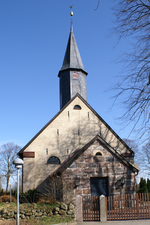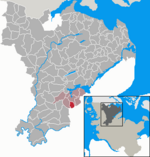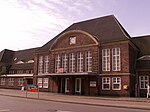Battle for Königshügel
1864 in Denmark1864 in GermanyBattles involving AustriaBattles involving DenmarkBattles of the Second Schleswig War ... and 2 more
Conflicts in 1864February 1864 events

The Battle of Königshügel (Danish: Kampene ved Kongshøj), also known as the Battle of Ober-Selk was a battle in the Second Schleswig War where Austrian Major General Gondrecourt and his infantry brigade succeeded in occupying the area in front of the Danevirke near Ober-Selk (Danish: Øvre Selk) and taking the strategically important village of Königshügel (Danish: Kongshøj).
Excerpt from the Wikipedia article Battle for Königshügel (License: CC BY-SA 3.0, Authors, Images).Battle for Königshügel
Am Königshügel, Haddeby
Geographical coordinates (GPS) Address Nearby Places Show on map
Geographical coordinates (GPS)
| Latitude | Longitude |
|---|---|
| N 54.4773 ° | E 9.5638 ° |
Address
Königshügel
Am Königshügel
24884 Haddeby
Schleswig-Holstein, Germany
Open on Google Maps










